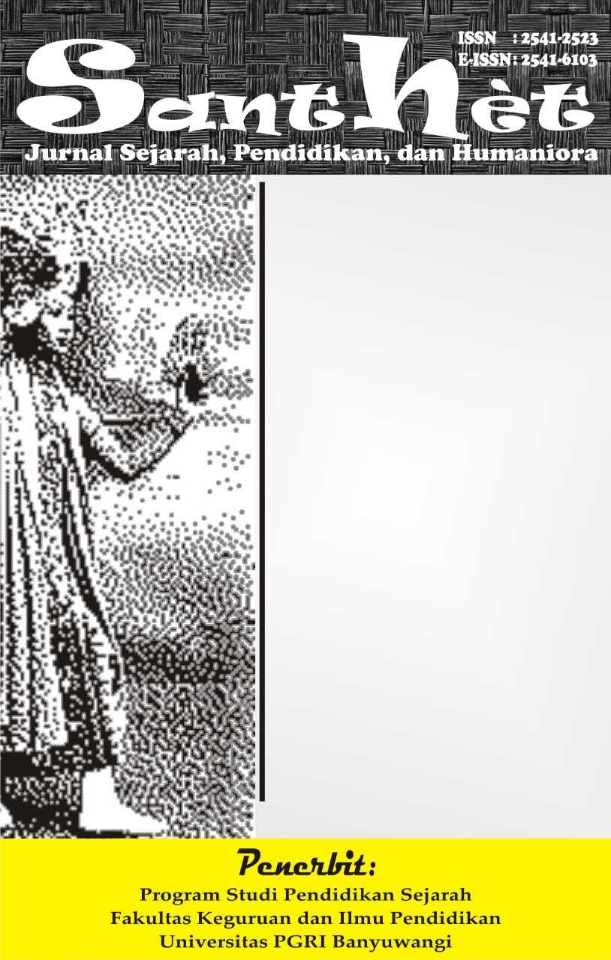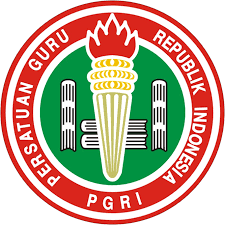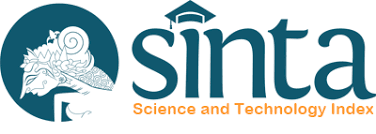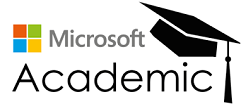Implementation of Project Instruments to Measure Creativity in History Learning Using Canva Platform for Grade X and XI at SMAN 4 Yogyakarta
DOI:
https://doi.org/10.36526/santhet.v8i1.2877Keywords:
Instrument, creativity, canvaAbstract
The aim of this research is to determine the extent of students' creativity in history learning, specifically in the subject of History (Specialization), at SMAN 4 Yogyakarta, through the utilization of technology such as Canva. This research adopts a Research and Development (R&D) approach. The analysis of project-based creativity assessment that will be examined includes the validity test, reliability test, and expert judgment, using Microsoft Excel and SPSS 22.0 as supporting tools. The research findings indicate that the project-based creativity assessment was conducted with 72 data from a total of 144 students in grade 10 and 11. The students assessed each other, and then the teachers evaluated the students. The validity level (exceeding the critical value) of the assessment of creativity, as evaluated among students, was deemed valid in terms of planning, implementation, and reporting aspects. However, in the evaluation conducted by the teachers, the planning aspect was considered invalid, while the implementation and reporting aspects were valid. The inter-rater reliability of the data among students was 0.693, and among teachers was 0.584, indicating reliability. The expert judgment test, conducted through a questionnaire answered by experts regarding the statements, indicated that the instrument was deemed suitable for use. The analysis of the project assessment results, in measuring creativity through the utilization of technology with Canva, is highly recommended as it can enhance creativity in history.
References
Ahmadi. (2010). Konstruksi Pengembangan Pembelajaran (Prestasi (ed.)). pustaka.
Ainina, I. A. (2014). Pemanfaatan Media Audio Visual Sebagai Sumber Pembelajaran Sejarah. Indonesian Journal History of Education, 3(1), 40–45.
Anggraeny. (2021). Peningkatan Ketrampilan Kreativitas Desain Grafis Digital Siswa SMU Menggunakan Aplikasi CANVA pada Ponsel Pintar. Peningkatan Ketrampilan Kreativitas Desain Grafis Digital Siswa SMU Menggunakan Aplikasi CANVA Pada Ponsel Pintar. Journal of Approriate Technology for Community Services, 2(2), 86–91. https://doi.org/https://doi.org/10.20885/jattec.vol2.iss2.art5
Arikunto. (2013). Prosedur Penelitian: Suatu Pendekatan Praktik. Rieneka cipta.
Astuti. (2021). . Pengembangan Media Canva Sebagai Media Pembelajaran Pada Materi Listrik Statis.
Ekawati. (2016). Perbedaan Penerapan Model Pembelajaran Kooperatif Tipe Think-Pair-Share dan Pembelajaran Konvensional pada Kelas VII SMP Negeri 10 Samarinda. Jurnal Pendas Mahakam, 1 (1): 54-, 4.
I Gde Widja. (1989). Sejarah Lokal Suatu Perspektif Dalam Pengajaran Sejarah. Departemen Pendidikan dan Kebudayaan.
Majid. (2014). Strategi Pembelajaran. PT Remaja Rosdakarya.
Mayanti. (2015). Pahami remaja generasi-z. Af Magazine.
Nurdyasyah. (2019). Media Pembelajaran Inovatif. UMSIDA Press.
O, Anik, N. Umamah, Marjono`, R. A. S. (2021). Pendidikan Sejarah Indonesia. Jurnal Pendidikan Sejarah Indonesia, 4(1), 67–70.
Pelangi, G., & Jakarta, U. S. H. (2020). Pemanfatan Aplikasi Canva sebagai media pembelajaran Bahasa dan Sastra Indonesia Jenjang SMA/MA. Sasido Unpam, 8(2) 1-18. https://doi.org/10.32493/Sasindo
Prameswati, L. N., Sari, G. P., & Anwar, A. (2022). Implementasi Metode Mind Mapping dalam Mata Pelajaran Sejarah Kebudayaan Islam (SKI) secara Online. Edudeena : Journal of Islamic Religious Education, 6(1), 12–22. https://doi.org/10.30762/ed.v6i1.342
Ropi, I. (2023). Pembelajaran sejarah berbasis proyek membuat mading digital pada topik Kolonialisme untuk menumbuhkan kecakapan abad ke-21 bagi siswa kelas XI SMAN 3 Blitar. 2(July 2022), 82–96.
Rosyida. (2018). Meningkatkan Daya Ingat Siswa dengan Metode Mind Mapping pada Mata Pelajaran IPS. Jurnal Riset Mahasiswa Bimbingan Dan Konseling.
Sanjaya. (2010). strategi pembelajaran berorientasi standar proses pendidikan. Prenada Media grup.
Sugiyono. (2021). Metode penelitian kuantitatif, kualitatif, dan R&D. Bandung : Alfabeta, CV.
Uslan, U., K, I. B., & Muh, A. S. (2018). Pengembangan Perangkat Asesmen Pembelajaran Proyek Pada Materi Perkembangbiakan Tumbuhan. Jurnal Ilmiah Profesi Pendidikan, 3(1), 103–112. https://doi.org/10.29303/jipp.v3i1.58
Wilis Okti Pamungkasi1, Nanik Wijayati, S. (2017). Pengembangan Instrumen Penilaian Proyek Berpendekatan Visual, Auditori, Dan Kinesthetik Dengan Produk Storyboard. School Science and Mathematics, 2(3), 133–139.





























